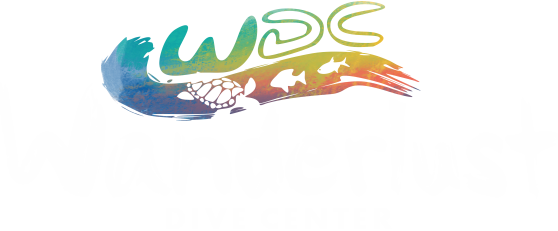About Bonaire
Bonaire is one of the most special places on earth – and not only because of the wonderful tropical weather and the best shore diving locations in the world. Our beautiful island is rich in history, culture and offers countless activities to enjoy on land or in the clear blue sea. The perfect destination for a versatile holiday.
Bonaire is one of the three ABC islands off the coast of Venezuela and, together with Saba and St Eustatius, forms the Caribbean Netherlands archipelago, also known as the BES islands. After Curaçao, Bonaire is the largest island. The capital of Bonaire is Kralendijk; which is a corruption of Koralendijk (dike of coral). About 21,000 people live on the island, most of them in the capital. The leeward island is 38.6 km long and 4.8 to 8 km wide and consists of volcanic rock and limestone coral that was created more than a hundred million years ago by undersea eruptions.
Visitor Entry Tax
Tourism is an important source of income for many countries and municipalities. Part of your income comes in indirectly. Think of taxes on rented cars, VAT on expenses incurred by tourists and income taxes on the wages of people working in tourism. Tourist taxes are a direct source of income for governments. Bonaire has levied taxes for years in the form of room tax on accommodations and a rental car tax on cars that are rented out on Bonaire.
Since July 1, 2022, the Bonairean government has replaced the tourist tax and rental car tax with a new form of tourist tax: the Visitor Entry Tax. The way in which this tax is levied differs from how it was done before.
You pay the Visitor Entry Tax per visit to Bonaire. The Visitor Entry Tax is $75.00 per person per stay.
There are two ways to pay the Visitor Entry Tax: in advance online or on the spot upon arrival at Bonaire International Airport. The most convenient thing is to arrange your Visitor Entry Tax in advance via the internet. That saves you time and any hassle upon arrival on Bonaire. Do not do that too far in advance, because a payment is irreversible. You will not get your money back if you unexpectedly do not travel to Bonaire. However, the generated QR code remains valid for one year after purchase. If you travel to Bonaire later, you can use the not yet used Visitor Entry Tax at that time.
You can arrange the Visitor Entry Tax online via this page.
STINAPA
STINAPA stands for Bonaire National Parks Foundation. This non-profit organization manages all national parks on Bonaire on behalf of the Bonairean government. Bonaire has two national parks:
Washington Slagbaai National Park
Washington Slagbaai occupies the entire northern tip of the island. In this park you will find a huge variety of protected animals, salt lakes and many different plant species. It is possible to explore the park by car, mountain bike or on foot.
Bonaire Marine Reserve
All waters around Bonaire and Klein Bonaire are part of the Bonaire Marine Reserve. The surrounding coral reefs make Bonaire a true underwater paradise. According to experts, nowhere in the world is there so much reef as close to the coast as here.
The special thing about these parks is that they are fully maintained with money from visitors in the form of a ‘Nature Fee’. So you can really make a difference here.
To be able to use the sea, you have to pay a ‘Nature Fee’ to STINAPA. From the proceeds of this tax, the Bonairean nature is maintained and protected.
From 2023, one rate will apply. Anyone who wants to snorkel, dive or do other water sports in and around Bonaire on Bonaire pays a uniform rate of $ 40 per person. From 2023, anyone with a STINAPA ticket can visit the Washington Slagbaai National Park.
Children under the age of 13 do not need a STINAPA ticket. Residents of Bonaire and the sister islands of Aruba and Curaçao will also no longer have to pay a nature fee from 2023.
You can easily pay the ‘Nature Fee’ online on the STINAPA website. After payment you will almost immediately receive an e-ticket at the e-mail address you provided. Print the e-ticket, or save it on your phone. The ticket is valid for one calendar year.
Make sure you pay the ‘Nature Fee’. If you do not do this, you risk a fine when a check is carried out.
Things to do
Snorkeling and diving
One of the best reasons to go to Bonaire is the beautiful underwater world. Whether you dive or snorkel, you swim among the most beautiful fish and animals. There are no less than 86 official dive sites, of which 51 are shore dive sites. In most places you can also snorkel well. The diving and snorkeling destinations are indicated from the shore by yellow stones with the name on them. Most dive sites can be found on the quiet west side of Bonaire.
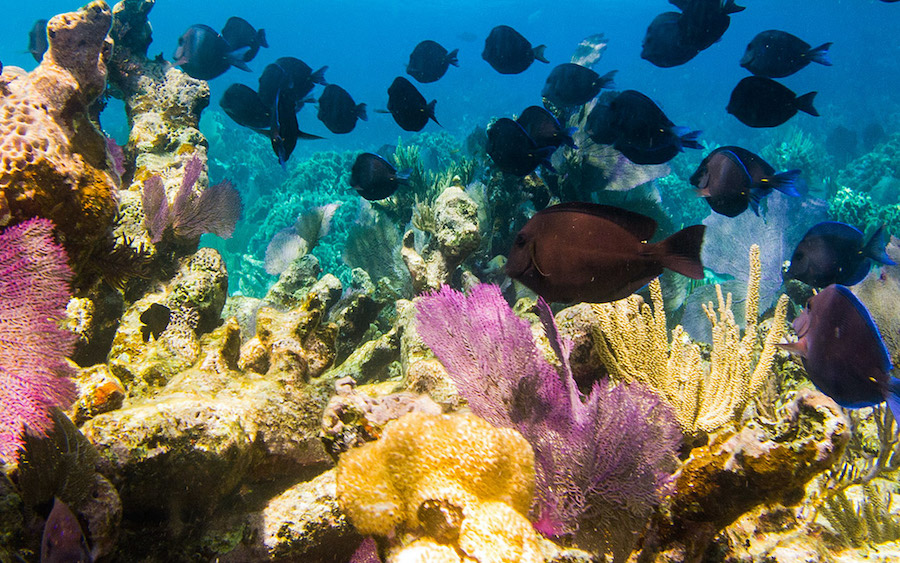
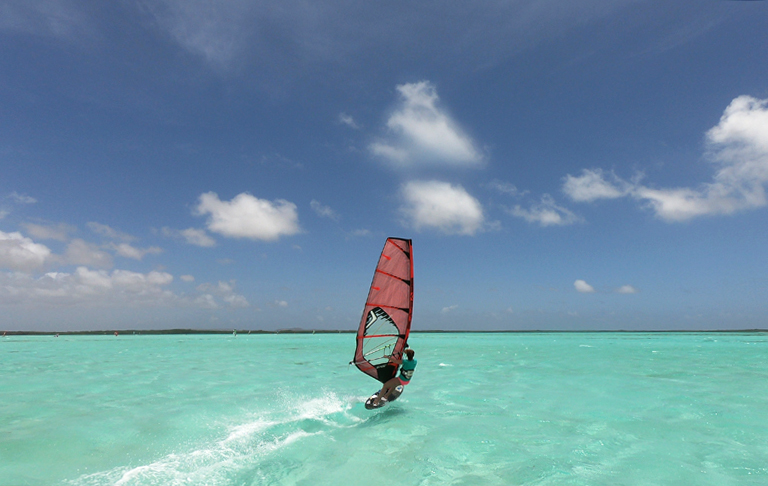
Kite or windsurfing
Due to the constant east wind, Bonaire is a paradise for kite and windsurfers. Kitesurfers seek out the wind at Atlantis Kite Beach, on the southwest side of Bonaire. Only here you can kitesurf as an exception to the rules of the Marine Park. There are two kite school buses on the beach. Windsurfing is only possible at Lac Bay. Here you will find windsurfing centers, such as Jibe City, where you can also rent equipment without lessons. Lac Bay is ideal for learning to surf, you can stand anywhere and the water is nice in temperature. There are two beach clubs: Sebastian’s and Hangout Bar, where you can have lunch or enjoy a cocktail. There are also beach beds available. It is mainly a place to have something to eat when you are surfing or when you are watching the surfers.
Donkey Sanctuary
As soon as you drive around Bonaire you will see them: wild donkeys (and goats). These run loose all over the island. The Spaniards once brought donkeys to Bonaire to use them as beasts of burden. When more modern means of transport came along, the donkeys became superfluous and were released into nature. Hundreds of donkeys now live on the island. They don’t always have it easy on the rugged and barren island. Sick, neglected or orphaned donkeys are taken care of at Donkey Sanctuary. There are already 700 donkeys at the donkey shelter.
As a visitor you can drive around and buy a bowl with food. The donkeys quickly realize that you have food. They come into the car with their funny heads to see if you have something for them. And some run with the car for a very long time. At the start of the site you will receive information about the donkey shelter and you can view the young donkeys up close.


Lake Goto (Saliña Goto)
On the way to Washington Slagbaai National Park from Kralendijk you will pass The Goto Lake (Saliña Goto, Saliña Grandi, Lagun Goto) if you take the right turn. This huge saltwater lake (saliña) was created because the water of the lake was closed off from the sea by a coral dam. Chances are that you will see more groups of flamingos in this. From the observation point you look out over the lake.
Washington Slagbaai National Park
In addition to the National Marine Park, Bonaire has another national park: Washington Slagbaai National Park. This National Park covers almost the entire northwest of Bonaire. There are no asphalted roads in the National Park, you need a 4×4 or at least a car that is high on the wheels. There are two car routes in the park, a long and a short route. There are also hiking and mountain bike trails and excellent diving and snorkeling.

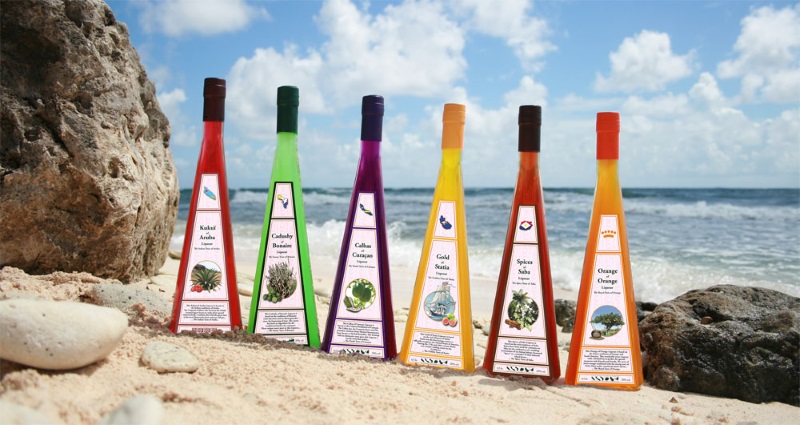
Cadushy Distillery at Rincon
Rincon is next to Kralendijk the second and oldest village on Bonaire. The town was founded in 1527 by Spanish settlers who wanted to stay out of sight of corsairs and pirates. You will find a number of historic buildings such as an old school, a monastery and two churches. What you certainly don’t want to miss when you are in Rincon on Bonaire is the Cadushy Distillery. In this small distillery they brew liqueur from cadushy, or cactus. In addition to the local liqueur, liqueurs from other Caribbean islands of the Dutch Kingdom are also made, again with typical local ingredients, such as Kukui Aruba, Calbas Curaçao, Gold Sint Eustatius (Statia), Spices Saba and Orange Orange (NL). In addition to these local liqueurs, rum and gin are also made. You will receive a brief explanation of how the liqueur is made and of course you can also taste it and take a bottle home with you.
Klein Bonaire
Klein Bonaire is an uninhabited island off the coast of Kralendijk. You can take the water taxi from Kralendijk to this island. The island is only accessible at a small sandy beach, otherwise it is densely covered with cacti. So there is nothing to see or do on the island, except sunbathe. You can, however, view the underwater world from the beach. This is known as very beautiful, but I don’t find it more beautiful than elsewhere. We go to the island with our own rental boat. Before the island we moor at a buoy (you are not allowed to anchor through the reef), from the boat we can snorkel directly above the reef and also swim to the island.
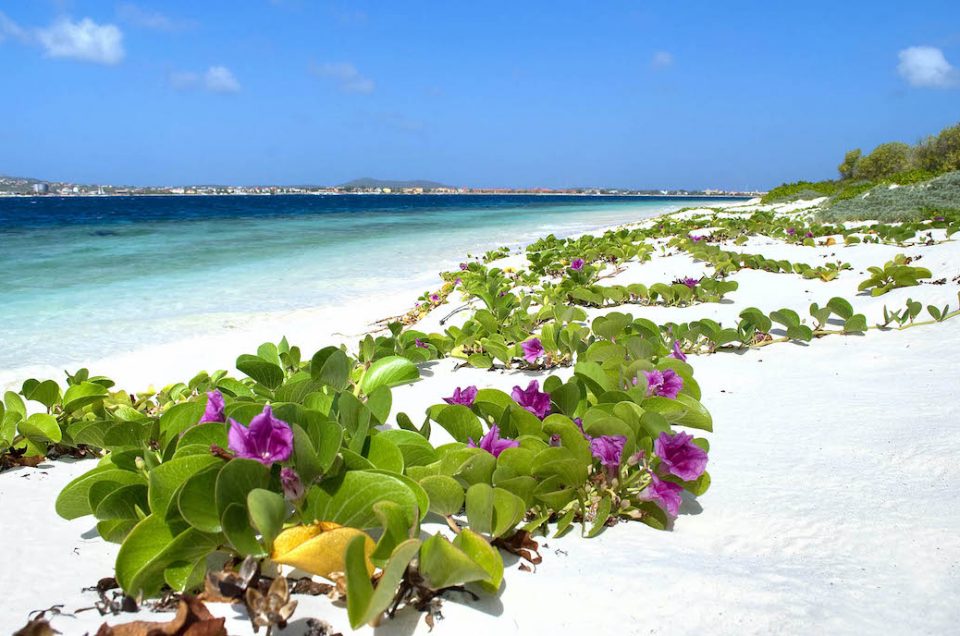
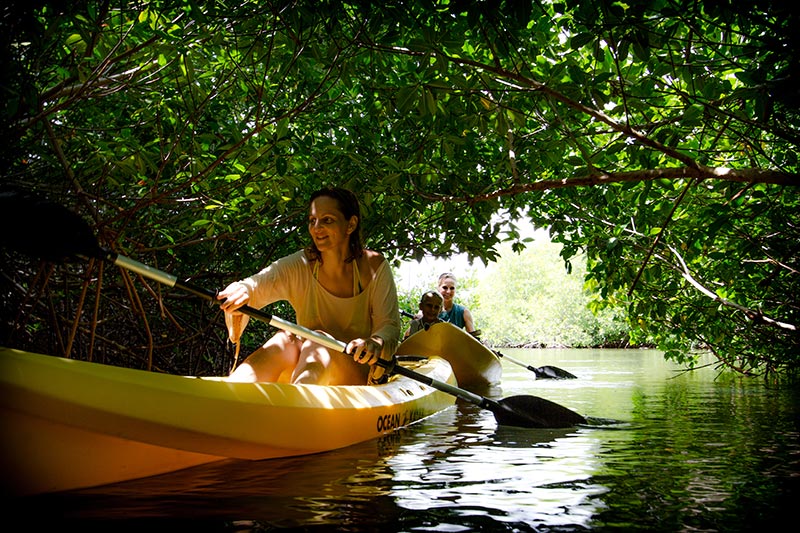
Kayaking in the Mangrove
The mangrove forest can be seen from the bay and from the highway to it. We snorkeled a part along the mangrove and saw the small fish swimming. Another active way to explore the mangrove is by kayak. It is best to book this kayak trip at the Mangrove Information Centre. You have the choice between 1 or 2 hours of paddling, including snorkeling among the mangroves.
Lac Bay
Is a shallow bay on the east side of the island of Bonaire. Lac Bay is the Valhalla for windsurfers. The wind always blows from the east and because you can easily stand anywhere, it is very relaxed sailing. The warm water temperature also makes this place an ideal windsurfing spot. Even if you want to learn it. You will also find various facilities for windsurfers here, such as a windsurfing school and equipment rental, but also beach clubs, toilets and accommodation. There is a large free parking lot.
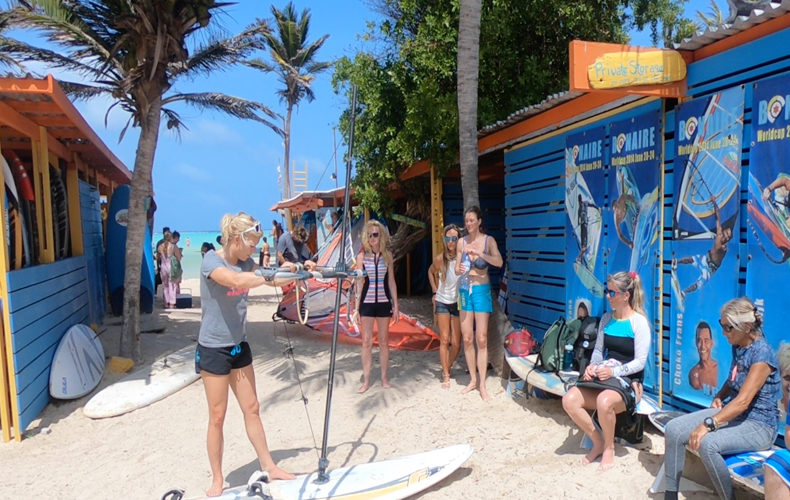
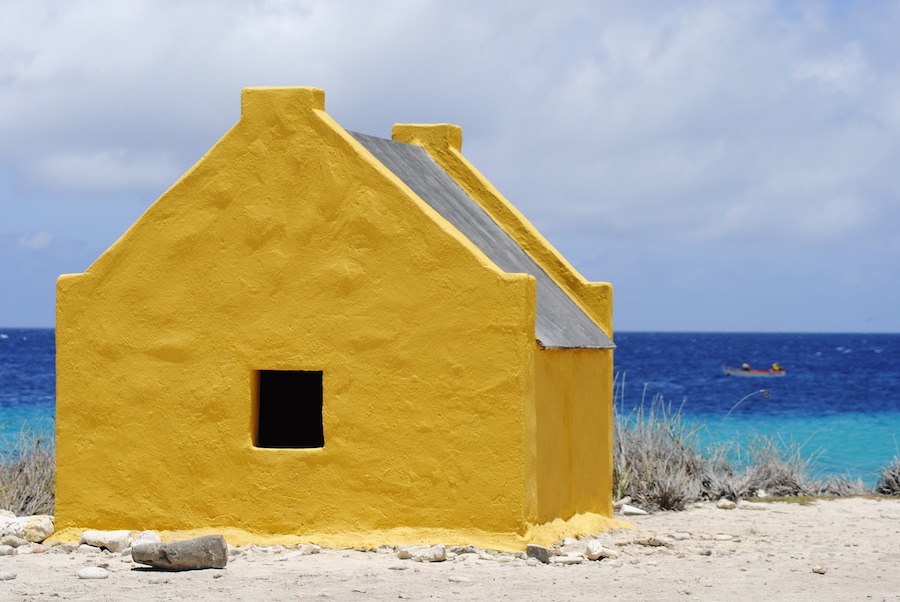
Slave houses
In the south near the salt pans you can still find the old slave houses from 1850. Slaves who worked in the salt trade first slept in the open air or in self-made huts made of straw and mud. Later the slave houses were made of coral limestone, originally with a thatched roof. A watertight roof has been made for the current management. The slaves who were put to work lived in Rincon, which is about a 6-hour walk from the salt pans. Here they were usually only on Sundays, the rest of the days they stayed in the slave huts. There used to be 4 salt pans: Red pan, White pan, Blue pan and Orange pan. To guide the ships to the correct salt pan, obelisks in matching colors have been placed, which can still be seen. At the white houses you can also see the large country house of the overseer. A stark contrast to the small slave huts.
Brine lake and other salt lakes (saliñas) of Bonaire
The south of Bonaire consists for a large part of saliñas, or salt lakes. These were created because the water of the lake was cut off from the sea by a coral dam. Most of the south of Bonaire is not accessible, here salt is extracted by multinational Cargill. The commercial extraction of salt dates back to the early 17th century. The West India Company brought slaves from Africa to work on the salt pans on Bonaire. These slaves lived in slave houses near the salt pans. The Pekelmeer is one of the salt lakes with a resting place for flamingos, where they forage and breed. The Flamingo Sanctuary is not accessible to visitors, but flamingos can be seen from a distance. Salt lakes, like flamingos, are colored pink. This is because the small pink salt shrimps and microorganisms that live in the water have turned pink due to algae, bacteria and beta-carotene.




